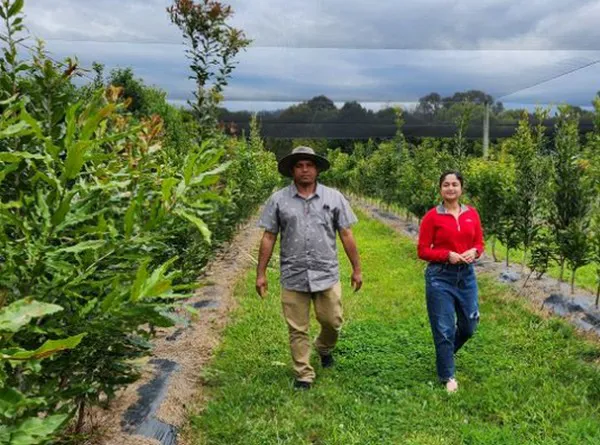Researchers from The University of Queensland have identified two desirable traits in macadamia trees to make orchards more productive and profitable. The national macadamia breeding program at UQ’s Queensland Alliance for Agriculture and Food Innovation (QAAFI) has found one trait which produces a shorter tree variety and a second that triggers earlier nut production from young trees.
Dr Mobashwer Alam said QAAFI’s research into macadamia rootstock breeding targets genetic characteristics which are highly desired by industry.
“The first trait involves reducing the height of mature trees from an average of 15 metres down to around five,” said Dr Alam. “This means pruning the trees is less labour-intensive and costly and harvesting the nuts is easier."
“The second trait reduces the time before new plantings produce nuts from five to three years, meaning growers will be earning an income sooner after the costly establishment of an orchard.”
Trial plantings of trees with those traits are ongoing but there have already been significant improvements. “So far yield with the new tree architecture has reached as much as seven kilograms per tree after just four years,” Dr Alam said. “This equates to 2.1 tonnes per hectare nut-in-shell.”
The breakthroughs were achieved as part of the program led by QAAFI, with funding from Hort Innovation and the Queensland Department of Agriculture and Fisheries.

Dr Mobashwer Alam and PhD candidate Pragya Dhakal at the Nambour macadamia tree trial planting site.
Farm Manager at Alloway Macadamia near Bundaberg, Johan Oosthuizen, worked closely with the research team and said the new tree varieties had made a positive difference. “We are seeing production of good quality kernels starting in the third year after planting, where in the past we had to wait a further two years,” Mr Oosthuizen said. “Some of these varieties are also smaller in structure so tree maintenance overall is reduced and delayed, which has a positive effect on your return on investment. I would recommend these varieties to growers so that they can make the most informed decision for new orchards."
“Orchards are a long-term investment, and the grower needs to get it right from the start.”
Dr Alam said the new tree traits would allow the macadamia industry to continue expanding. “We have demonstrated we can acquire the expertise needed to make an industry-relevant genetic gain,” he said. “That opens up an exciting new phase in macadamia breeding.”
For more information:
Dr Mobashwer Alam
University of Queensland
Tel.: +61 (0)407 925 991
m.alam@uq.du.au
Natalie MacGregor
Tel.: +61 (0)409 135651
n.macgregor@uq.edu.au
